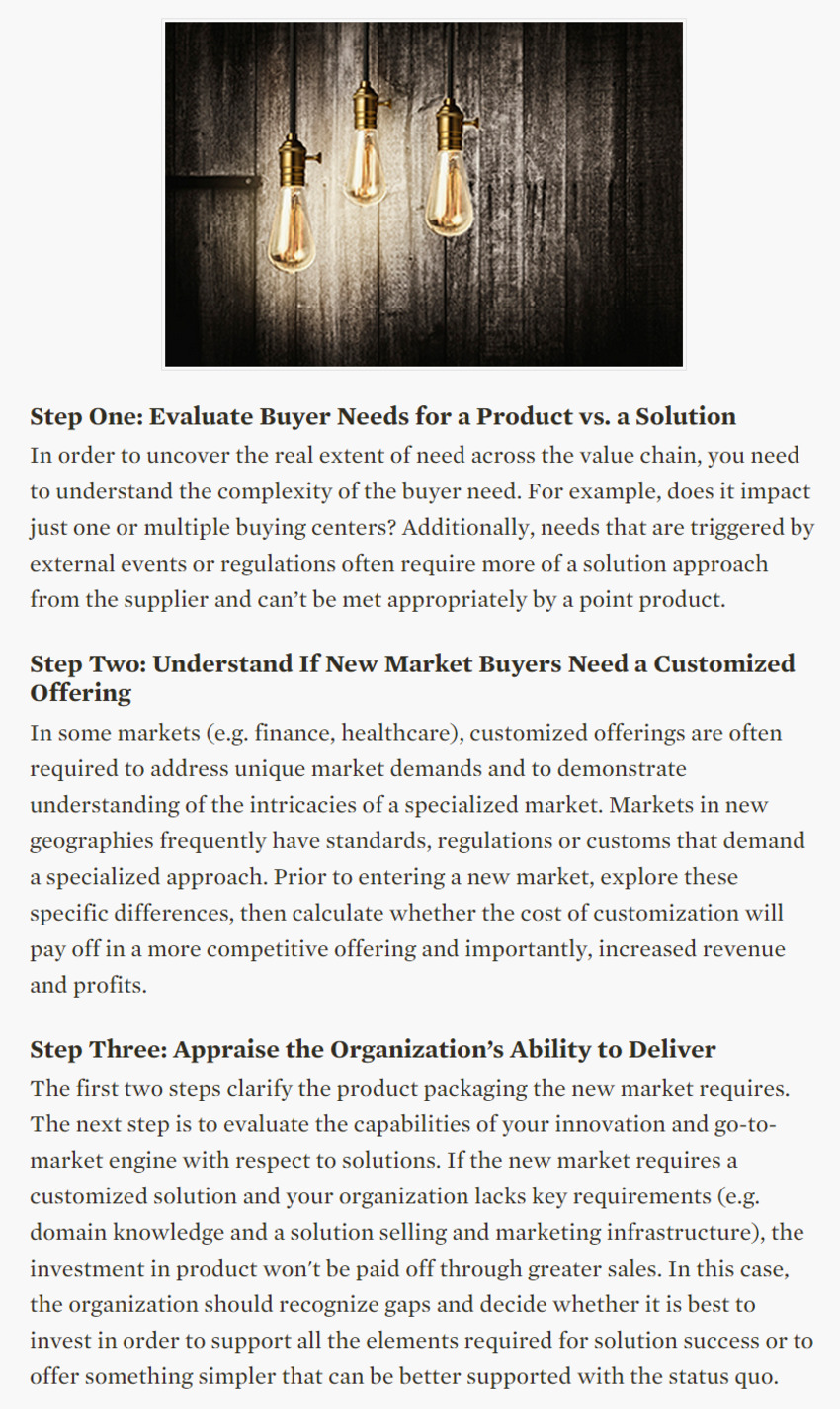Advanced/ Digest...
Much of what I’ve learned during this multi-decade-long adventure I’m sharing openly as some simple “Startup Secrets” and Case Examples to frame discussion with the goal of helping entrepreneurs to avoid common pitfalls. Here are ten to get you going.
Startup Secret #1: Don’t be afraid to say “no” more than “yes.”
As a startup, you will be defined as much (or more) by what you say “No” to as what you say “Yes” to. Perhaps the single most important Startup Secret is to find your focal point.
Startup Secret #2: Recognize what is right “4U”
As you work to position your startup and develop your Value Proposition, focus on addressing what I like to call the 4Us:
-- > Is the problem Unworkable? Does your solution fix a broken business process where there are real, measureable consequences to inaction? Will someone get fired if the issue is not addressed?
-- > Is fixing the problem Unavoidable? For example, is it driven by a mandate with implications associated with governance or regulatory control?
-- > Is the problem Urgent? Is it one of the top three priorities for spend?
-- > Is the problem Underserved? Is there a conspicuous absence of valid solutions to the problem you’re looking to solve?
Startup Secret #3: Think in 3D
Once you have determined the problem your venture is solving, define your solution. The most immediate question to ask is: What is your compelling breakthrough? A useful approach is to think of 3Ds: What unique combination of Discontinuous innovation, Defensible technology and Disruptive business model are you bringing to bear, and what makes it truly compelling?
-- > Discontinuous innovations offer transformative benefits over the status quo by looking at a problem differently.
-- > Defensible technology offers intellectual property, for example, that can be protected to create a barrier to entry and an unfair competitive advantage.
-- > Disruptive business models cause an “innovators’ dilemma” and/or yield value and cost rewards that help catalyze the growth of a business.
Startup Secret #4: Look for non-disruptive disruptions
Evaluate the potential for success using the Gain/Pain ratio, which involves measuring the gain you deliver a customer versus the pain and cost for a customer to adopt. As an investor, I look for non-disruptive disruptions: technologies that offer game-changing benefits without requiring major modifications to existing processes or environments. Simply put: disruptive innovation should not be disruptive to adopt.
Startup Secret #5: Focus on a blatant, critical need. Ask: “Is it BLAC and White?”
Ideally, you want to be in the position of addressing problems that are blatant and critical (especially for B2B), as those problems are far more acute than ones that are latent and aspirational. Blatant and critical problems stand in the way of business. They put careers and reputations at risk. Latent problems are unacknowledged, which means they often require costly missionary selling. Aspirational problems are optional, which is often the hardest place for a startup to sell.
Startup Secret #6: If you are going to pick a fight, pick a BIG fight
Big problems can lead to big opportunities. It often requires just as much work to go after a small market. Significantly painful problems are the source of great opportunity for entrepreneurs and have the potential to turn into really valuable solutions. They may not be easy to solve but often lead to true innovation.
Startup Secret #7: Focus on your Minimum Viable Segment (MVS)
I find too many entrepreneurs who follow the lean methodology stuck in a product spin and become consumed with their Minimum Viable Product. While I often hear about the importance of product/market fit, I don’t believe enough consideration is given to the market side of this equation. While the MVP is critical, it’s missing its dance partner, what I call the Minimum Viable Segment (MVS). MVS is about focusing on a market segment of potential customers that have the same needs into which you can repeatedly sell. Defining and focusing on your MVS is vital because without it, potential users who have divergent needs will quickly pull your MVP in many different directions.
Startup Secret #8: Hire for CQ (Cultural Quality)… do QC (Quality Control)
Ideas are worth very little without people to execute them, a culture to guide the selection of talent and a big, bold vision to attract and unify the team. Human capital is what separates good companies from great ones – which is why establishing a strong culture to attract and retain the right people, while unifying them behind an inspiring vision, is essential to any significant venture.
Startup Secret #9: Hire 3 As (attitude, aptitude, and ability) and 3+s (+aware, +authentic, +athlete)
We all want to hire ‘A’ players – and this can be accomplished by looking at three important ‘A’s:
-- > Ability – Does the person have the right balance of IQ and Experience, Knowledge and Skills (EKS) required for the job?
-- > Aptitude – Being able to rapidly adapt and learn new skills and knowledge.
-- > Attitude – Pursuing breakout opportunities requires the right attitude toward things like problem solving, persistence, and participation in a team.
-- > Athletes often triumph over experience and possess the agility to adopt to change.
-- > Self-Aware people are easy to work with, are open about their self-professed strengths and weaknesses, work well with others and are amenable to mentoring and coaching.
-- > Authentic people are genuine in all they do and demonstrate a sincere passion for their roles.
Startup Secret #10: Incomplete stand outs are better than complete stand ups!
Many entrepreneurs think they need to have all answers, when, in fact, they don’t – especially when they seek funding. The nature of venture capital is high-risk. Part of that risk is not knowing the answers before you start. As VCs, we’re fine with the unknown, as long as people have the self-awareness and conviction to work through challenges as they arise. Overall, it’s easy to start a company, but hard to start a business. From capital constraints to sales challenges, one needs to be able to accept that not having all of the pieces at the onset is okay, and these elements can be built out as you grow, as long as you have a clear roadmap and unifying culture.
___________________________________
► Receive a FREE daily summary of The Marketing Technology Alert directly to your inbox. To subscribe, please go to http://ineomarketing.com/About_The_MAR_Sub.html (your privacy is protected).

 Your new post is loading...
Your new post is loading...















![[INFOGRAPHIC] The State of B2B Product Marketing - Kapost Content Marketing Blog | The MarTech Digest | Scoop.it](https://img.scoop.it/AWikvMSBkldWdaSwUnXyKvL6dadsvGA8m9WNoVsbzkY=)
![What Sales Pros Want From Product Management [Infographic] - Profs | The MarTech Digest | Scoop.it](https://img.scoop.it/aHSwQlzYF6k-DUlCWjXGpfL6dadsvGA8m9WNoVsbzkY=)











50 Creative Ideas You Can Use to Improve SaaS Product Adoption - Unbounce
You'll want to click through the view the complete 50.
This news comes to you compliments of marketingIO.com. #MarTech #DigitalMarketing